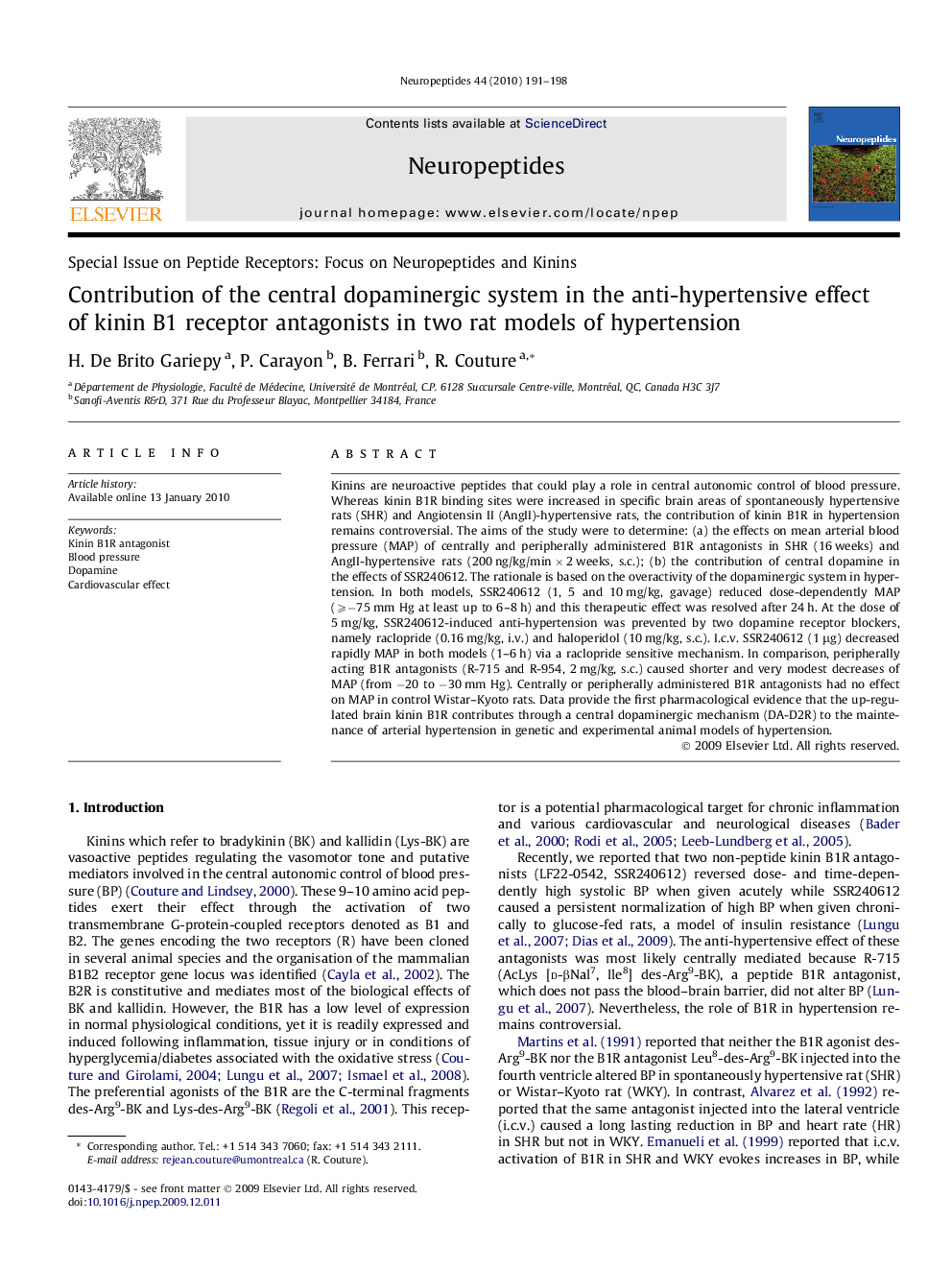| Article ID | Journal | Published Year | Pages | File Type |
|---|---|---|---|---|
| 2808246 | Neuropeptides | 2010 | 8 Pages |
Kinins are neuroactive peptides that could play a role in central autonomic control of blood pressure. Whereas kinin B1R binding sites were increased in specific brain areas of spontaneously hypertensive rats (SHR) and Angiotensin II (AngII)-hypertensive rats, the contribution of kinin B1R in hypertension remains controversial. The aims of the study were to determine: (a) the effects on mean arterial blood pressure (MAP) of centrally and peripherally administered B1R antagonists in SHR (16 weeks) and AngII-hypertensive rats (200 ng/kg/min × 2 weeks, s.c.); (b) the contribution of central dopamine in the effects of SSR240612. The rationale is based on the overactivity of the dopaminergic system in hypertension. In both models, SSR240612 (1, 5 and 10 mg/kg, gavage) reduced dose-dependently MAP (⩾−75 mm Hg at least up to 6–8 h) and this therapeutic effect was resolved after 24 h. At the dose of 5 mg/kg, SSR240612-induced anti-hypertension was prevented by two dopamine receptor blockers, namely raclopride (0.16 mg/kg, i.v.) and haloperidol (10 mg/kg, s.c.). I.c.v. SSR240612 (1 μg) decreased rapidly MAP in both models (1–6 h) via a raclopride sensitive mechanism. In comparison, peripherally acting B1R antagonists (R-715 and R-954, 2 mg/kg, s.c.) caused shorter and very modest decreases of MAP (from −20 to −30 mm Hg). Centrally or peripherally administered B1R antagonists had no effect on MAP in control Wistar–Kyoto rats. Data provide the first pharmacological evidence that the up-regulated brain kinin B1R contributes through a central dopaminergic mechanism (DA-D2R) to the maintenance of arterial hypertension in genetic and experimental animal models of hypertension.
